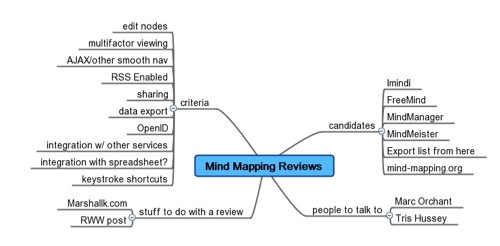 One of my consulting clients is a company called Iterasi, providers of a browser plug-in that lets users “notarize” a perfect replica of any web page’s current state. That includes forms and AJAX states. It’s a pretty potent tool and one that I’m really excited to use for my own research…once there’s a Mac version available! (Coming soon, they say.) The company is doing a great job of using social media, including a prolific blog that I designed for them and now a series of short videos produced by my former co-worker at SplashCast, Alex Williams. You can read about our very successful use of social media for marketing at our previous place of work in this post.
One of my consulting clients is a company called Iterasi, providers of a browser plug-in that lets users “notarize” a perfect replica of any web page’s current state. That includes forms and AJAX states. It’s a pretty potent tool and one that I’m really excited to use for my own research…once there’s a Mac version available! (Coming soon, they say.) The company is doing a great job of using social media, including a prolific blog that I designed for them and now a series of short videos produced by my former co-worker at SplashCast, Alex Williams. You can read about our very successful use of social media for marketing at our previous place of work in this post.
I’ve been hesitant to write about Iterasi here just because I generally don’t write about consulting clients (though I did in my last post too, so maybe things are changing). Alex did a short video interview with me that went up yesterday, though, and I realized after watching it that I should make sure any readers using Windows know about it right away. It’s really useful! I want to use it and will officially give them a hard time for not having the Mac version done yet, as I told them many bloggers would. Seriously, I’m anxious for its imminent completion.
Below is that video we did together about one way I want to use Iterasi. Here’s a page of links to press they got for their launch, which I advised on. At the end of this post is a screencast demonstration of the product’s functionality, which was produced by Rick Turoczy of Return Corp (and the fantastic local blog SiliconFlorist!). I tried to produce a screencast but had issues. Hire me for overall strategy and RSS work and you’ll be very happy – don’t hire me to produce screencasts!
Read on to watch the videos.
Continue reading
 I just listened to the most amazing podcast about the future of the web and semantic analysis. It was
I just listened to the most amazing podcast about the future of the web and semantic analysis. It was 
 One of my favorite clients that I’ve consulted with in recent weeks is a Massachusetts based company called
One of my favorite clients that I’ve consulted with in recent weeks is a Massachusetts based company called 